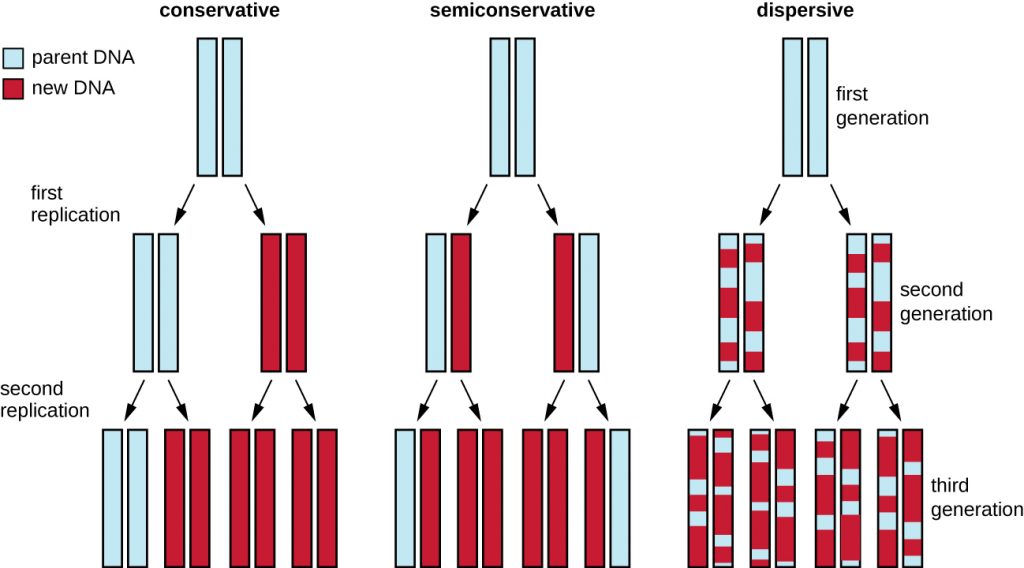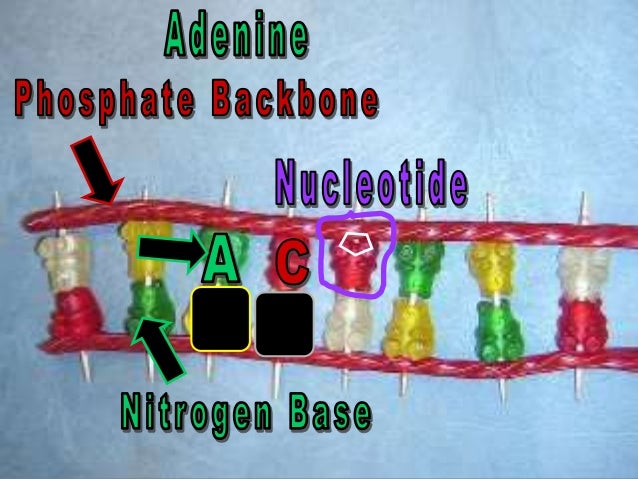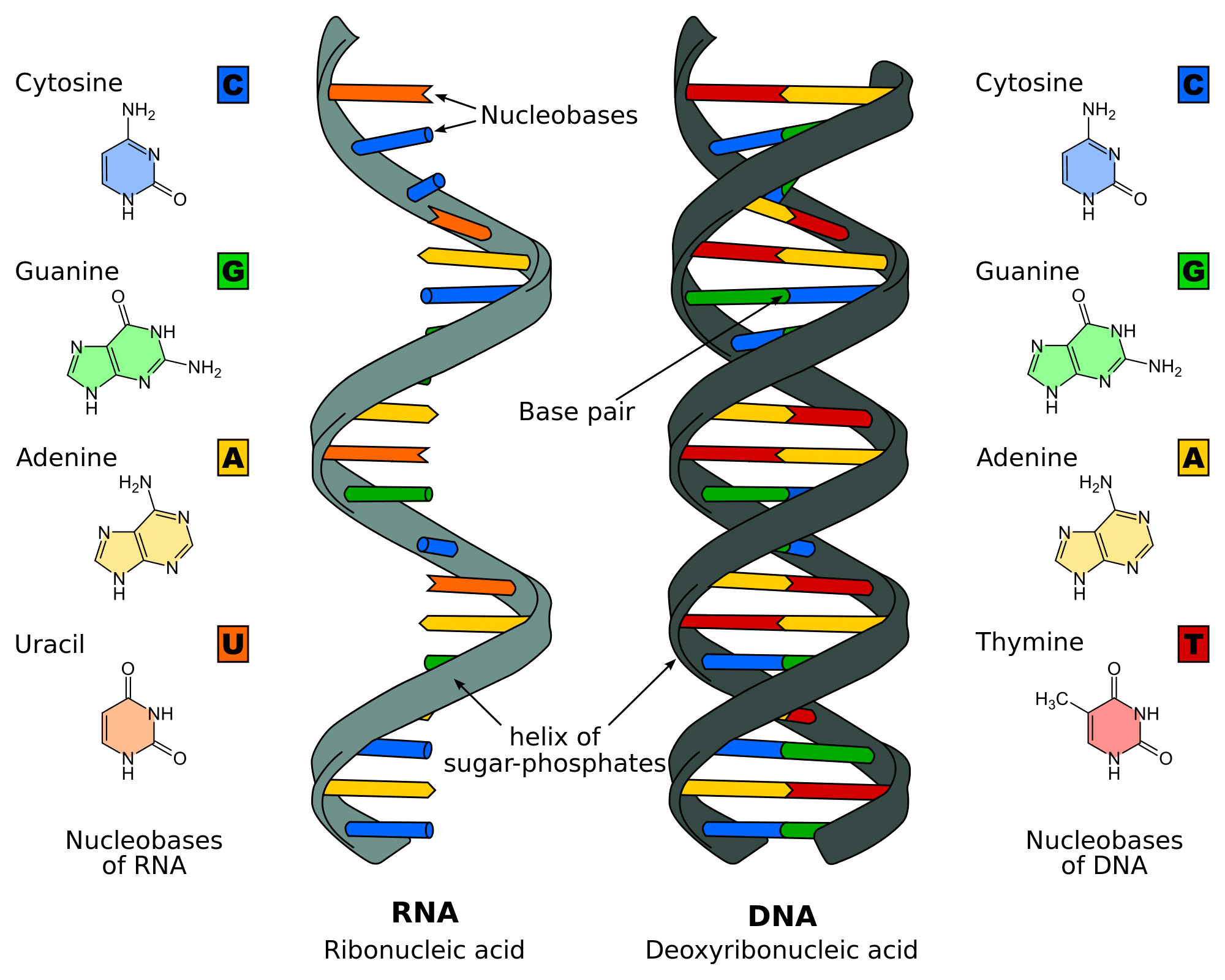40 dna replication model with labels
Solved Draw and label a model that shows how complementary - Chegg Draw and label a model that shows how complementary base-pairing is used to create a new strand of DNA during cellular DNA replication. Your model should include the following labels: template strand, new strand, base pair, and DNA polymerase.simple drawing please ! › scitable › topicpageDNA Transcription | Learn Science at Scitable - Nature Once transcription is initiated, the DNA double helix unwinds and RNA polymerase reads the template strand, adding nucleotides to the 3′ end of the growing chain (Figure 2b).
PDF DNA Replication Model Activity - Socorro Independent School District In the chart below show the results of what happened to the original DNA model when it underwent replication. List the nitrogenous bases on the lines. ... To replicate the original DNA, draw in, label and color complementary nucleotides for 2 new strands formed by DNA replication. 6. Compare/contrast the original DNA molecule (old strands) with ...

Dna replication model with labels
DNA Replication- definition, enzymes, steps, mechanism, diagram DNA replication process uses DNA polymerase as the main enzyme for catalyzing the joining of deoxyribonucleoside 5′-triphosphates (dNTPs) forming a growing chain of DNA. Other proteins are also involved for initiation of the process and copying of DNA, along with proofreading capabilities to ensure the replication process takes place accurately. PDF CHAPTER 5 DNA REPLICATION I: Enzymes and mechanism This model of replication is called conservative: the parental DNA molecules are the same in the progeny as in the parent cell. In the second model, the each strand of the daughter DNA molecules would be a combination of old and new DNA. This type of replication is referred to as random (or dispersive). en.wikipedia.org › wiki › Chloroplast_DNAChloroplast DNA - Wikipedia Multiple replication forks open up, allowing replication machinery to replicate the DNA. As replication continues, the forks grow and eventually converge. The new cpDNA structures separate, creating daughter cpDNA chromosomes. In addition to the early microscopy experiments, this model is also supported by the amounts of deamination seen in cpDNA.
Dna replication model with labels. PDF Making a Model of DNA Instructions - Mrs. Moretz's Science Site nucleotides that fit. Your finished model should resemble a ladder. 7) To show replication of your model, separate the left side from the right side on your desk, leaving a space of about 15 to 20 cm. 8) Using the remaining nucleotides, add to the left side of the model to build a new DNA molecule. Do the same with the separated right side. NetLogo Models Library: DNA Replication Fork - Northwestern University Four enzymes are included in this model of the DNA replication fork process: The entire DNA polymerase enzyme is be modeled as a single agent The entire Helicase enzyme will is modeled as a single agent The entire Topoisomerase enzyme is modeled as a two agents. DNA replication :: DNA from the Beginning A half DNA ladder is a template for copying the whole. A number of scientists knew about Meselson and Stahl's results months before the paper was published. Max Delbrück, a fellow scientist, locked Meselson and Stahl in a room with two sleeping bags and a typewriter until they finished writing the paper. DNA Replication I - theta model and rolling circle replication DNA Replication by Rolling Circle Model -. This occurs when a circular ds-DNA genome needs to be made in multiple copies such as in lambda phage. A nick is made at the origin of replication on the outer strand, also called the (+) strand, making 2 ends of the (+) strand - 5' and 3' end. The 3'-OH end is extended by replication enzymes ...
DNA Replication Labeling Diagram | Quizlet DNA Replication Labeling STUDY Learn Flashcards Write Spell Test PLAY Match Gravity Created by Kimberly_McGuffie TEACHER Terms in this set (11) Single Stranded Binding Protein Binds to and stabilizes single-stranded DNA until it can be used as a template. Helicase An enzyme that unwinds the DNA double helix during DNA replication Okazaki Fragment embryo.asu.edu › pages › meselson-stahl-experimentThe Meselson-Stahl Experiment (1957–1958), by Matthew ... Apr 18, 2017 · Editor's note: Madeleine Howell-Moroney created the above image for this article. You can find the full image and all relevant information here.. In an experiment later named for them, Matthew Stanley Meselson and Franklin William Stahl in the US demonstrated during the 1950s the semi-conservative replication of DNA, such that each daughter DNA molecule contains one new daughter subunit and ... replication | Learn Science at Scitable - Nature DNA Replication Models | Semiconservative, Conservative & Dispersive ... There are three models of DNA replication. These models are the conservative model, the semiconservative model, and the dispersive model. Which DNA replication model is the correct model Why? The...
DNA Replication Steps and Process - ThoughtCo DNA replication is the production of identical DNA helices from a single double-stranded DNA molecule. Each molecule consists of a strand from the original molecule and a newly formed strand. Prior to replication, the DNA uncoils and strands separate. A replication fork is formed which serves as a template for replication. en.wikipedia.org › wiki › DNA_ligaseDNA ligase - Wikipedia DNA ligase is a specific type of enzyme, a ligase, (EC 6.5.1.1) that facilitates the joining of DNA strands together by catalyzing the formation of a phosphodiester bond.It plays a role in repairing single-strand breaks in duplex DNA in living organisms, but some forms (such as DNA ligase IV) may specifically repair double-strand breaks (i.e. a break in both complementary strands of DNA). Chapter 9: DNA Replication - Chemistry - Western Oregon University This labeled the parental DNA. The E. coli culture was then shifted into a medium containing 14 N and allowed to grow for one generation. The cells were harvested and the DNA was isolated. The DNA was separated by ultracentrifugation, during which the DNA formed bands according to its density. ... DNA replication in the model organism ... Biology Project The Biology Project, an interactive online resource for learning biology developed at The University of Arizona. The Biology Project is fun, richly illustrated, and tested on 1000s of students.
DNA replication - Definition and Examples - Biology Online Dictionary
DNA Replication | What is DNA Replication? | AncestryDNA® Learning Hub In a now-famous biology experiment, they grew bacteria inside a special solution to label all of the cells' DNA with a marker. They then used a different marker to label only the DNA that was newly synthesized. They discovered that replicated DNA always contained one strand from the original DNA molecule and one strand that was newly formed.
DNA Replication Process with Diagrams Class 12 - BYJUS DNA Replication In the process of DNA replication, the DNA makes multiple copies of itself. It is a biological polymerisation, which proceeds in the sequence of initiation, elongation, and termination. It is an enzyme-catalysed reaction. DNA Polymerase is the main enzyme in the replication process. DNA Replication Process DNA Replication Steps
Label DNA and Replication - Google Slides check out this youtube video 4 ssbs 5 dna polymerase adds nucleotides (5' to 3') replication fork formed dna polymerase attaches to the primer okazaki fragments bound by ligase dna helicase unwinds...
› mol-bio-referenceAddgene: Molecular Biology Reference Specifically, A pairs with T and C pairs with G. During replication, DNA unwinds and the DNA polymerase enzyme binds to and migrates down the single stranded DNA adding nucleotides according to the sequence of the complementary strand. The replication process can also be done in a test tube to copy DNA regions of interest.
DNA Replication | Biology for Non-Majors I | | Course Hero Observe Figure 1: the double helix of the original DNA molecule separates (blue) and new strands are made to match the separated strands. The result will be two DNA molecules, each containing an old and a new strand. Therefore, DNA replication is called semiconservative. The term semiconservative refers to the fact that half of the original ...
3 Ways to Make a Model of DNA Using Common Materials - wikiHow Enjoy, your model is complete! Method 2 Making a Model Using Styrofoam Balls 1 Gather your supplies. For this version of the project, you will need small styrofoam balls, a needle and thread, paint, and toothpicks. [3] 2 Paint your styrofoam balls. Choose 6 different colors to represent the sugar and phosphate groups, and the 4 nitrogenous bases.
DNA Replication | Microbiology | | Course Hero Figure 2. Meselson and Stahl experimented with E. coli grown first in heavy nitrogen (15 N) then in 14 N. DNA grown in 15 N (blue band) was heavier than DNA grown in 14 N (red band), and sedimented to a lower level on ultracentrifugation. After one round of replication, the DNA sedimented halfway between the 15 N and 14 N levels (purple band), ruling out the conservative model of replication.
DNA Replication (With Diagram) | Molecular Biology Mechanism of DNA replication is the direct result of DNA double helical structure proposed by Watson and Crick. It is a complex multistep process involving many enzymes. 1. Initiation: It involves the origin of replication. Before the DNA synthesis begins, both the parental strands must unwind and separate permanently into single stranded state.
Solved Label each diagram with the appropriate model of DNA - Chegg Expert Answer. 100% (6 ratings) Ans) I have attached the labelled diagram below : (In conservative mode of DNA replication, after 1 round …. View the full answer. Transcribed image text: Label each diagram with the appropriate model of DNA replication. 10 Label each diagram with the appropriate model of DNA replication. 0.24 points ...
PDF MODELS OF DNA REPLICATION - Raja Narendra Lal Khan Women's College FIG : REPLICATION OF DNA IS SEMI-CONSERVATIVE Figureillustrates a prediction of this model. If the parental DNA carries a 'Heavy'density label. The parental DNA is duplex of twoheavy strands(BLUE). After one generation of growth in "light"medium, the duplex DNA is 'hybrid'density-it consists of oneheavy
› science › biologyStages of transcription - Khan Academy DNA replication and RNA transcription and translation. Transcription and mRNA processing. Molecular structure of RNA. Overview of transcription. Stages of transcription.
Molecular mechanism of DNA replication - Khan Academy Leading and lagging strands in DNA replication. Speed and precision of DNA replication. Semi conservative replication. Molecular mechanism of DNA replication. This is the currently selected item. DNA structure and replication review. Practice: Replication. Next lesson. Transcription and RNA processing.
PDF Part 2 - Modeling DNA Function: Replication - 3D Molecular Designs Create a schematic model showing DNA replication. Include and label the parental strands of DNA, the leading strand, and the lagging strand in your diagram. Be sure to label the 3' and 5' ends of the DNA strands and indicate the direction of DNA synthesis. 13. Evaluation of the model.
Molecular models of DNA - Wikipedia The DNA model shown (far right) is a space-filling, or CPK, model of the DNA double helix. Animated molecular models, such as the wire, or skeletal, type shown at the top of this article, allow one to visually explore the three-dimensional (3D) structure of DNA. Another type of DNA model is the space-filling, or CPK, model.
DNA Replication - Milwaukee School of Engineering Begin the process of DNA replication by feeding the strands of the constructed DNA into the top of the helicase enzyme on the replication mat. Be sure to follow the directionality of the DNA indicated as you position your molecule. Continue feeding the DNA through the enzyme until you have 11 bases emerging from the bottom of the helicase.
DNA Replication - Genome.gov DNA replication is the process by which the genome's DNA is copied in cells. Before a cell divides, it must first copy (or replicate) its entire genome so that each resulting daughter cell ends up with its own complete genome. Narration 00:00 … DNA replication is probably one of the most amazing tricks that DNA does.
en.wikipedia.org › wiki › Chloroplast_DNAChloroplast DNA - Wikipedia Multiple replication forks open up, allowing replication machinery to replicate the DNA. As replication continues, the forks grow and eventually converge. The new cpDNA structures separate, creating daughter cpDNA chromosomes. In addition to the early microscopy experiments, this model is also supported by the amounts of deamination seen in cpDNA.















Post a Comment for "40 dna replication model with labels"